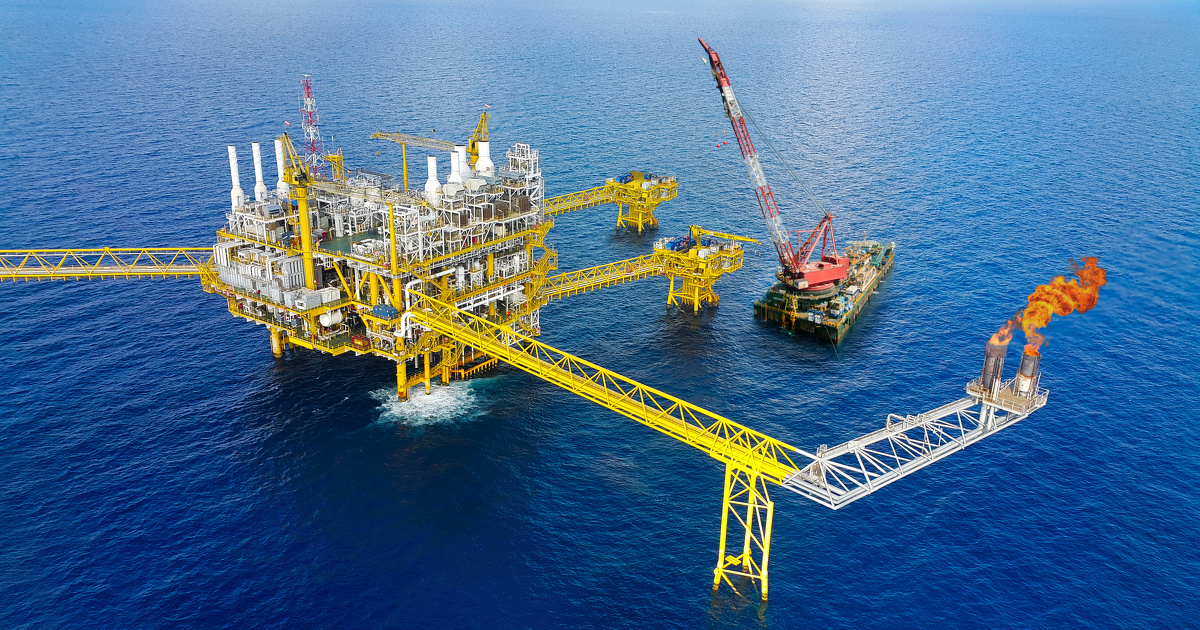Hydrocarbon Extraction: Processes, Methods, Environmental Impact

- 16 Apr 2024
Why is it in the News?
Over millennia, mighty geological processes in the earth’s crust heated and compressed together pieces of life forms that had been dead for a while.
What Is a Hydrocarbon?
- The term hydrocarbon refers to an organic chemical compound that is composed exclusively of hydrogen and carbon atoms.
- Hydrocarbons are naturally occurring and form the basis of crude oil, natural gas, coal, and other important energy sources.
- They are highly combustible and produce carbon dioxide, water, and heat when they are burned.
- As such, hydrocarbons are highly effective as a source of fuel.
Where are Hydrocarbons Located?
- Hydrocarbons, such as natural gas, coal, crude oil, and petroleum, are typically found in underground rock formations within reservoirs.
- These reservoirs form when less resistant rocks are overlayed by more resistant ones, creating a lid that traps hydrocarbons beneath.
- Petroleum geology tools, methods, and techniques are used to assess these rocks for their porosity and permeability, determining how much hydrocarbons they can hold and how easily they can flow through them.
- Kerogen, lumps of organic matter, is the primary source of hydrocarbons within these subterranean rocks.
- Kerogen can be deposited from lacustrine, marine, or terrestrial ecosystems.
- Over time, surrounding rocks can become warmer and more compactified, exerting forces on kerogen that cause it to break down into various hydrocarbons, such as waxy oils, light oils, gas, and coal.
- Petroleum geologists locate and characterize kerogen-containing source rocks, studying their geophysical and thermal properties.
- They conduct modeling activities, analyze observational data, and dig exploration wells to estimate hydrocarbon quantities.
- Once a profitable hydrocarbon source is identified, drilling can commence.
How are the Hydrocarbons Accessed?
- Drilling and reservoir engineers employ various methods to extract hydrocarbons efficiently without damaging the reservoir.
- The process begins with creating a production well, strategically positioned to maximize drainage.
- A drilling machine, consisting of a drill pipe, drill collars, and a drill bit, is used to create the well.
- As drilling progresses, steel casings are lowered into the tunnel, and cement slurry is pumped into the gap between the casings and the tunnel's outer edge.
- The solidifying cement prevents cave-ins and blocks surrounding fluids from entering the well.
- The tunnel is filled with drilling fluid, which cools the drill bit and carries rock fragments to the surface for removal.
- Controlling drilling fluid pressure is crucial to prevent hydrocarbon eruptions. Modern drilling setups use blowout preventers to manage such events.
- Meanwhile, mud-logging records rock properties at different depths, aiding the process.
- Drill pipes can be extended or replaced as needed during the drilling process, which is now conducted by advanced drilling rigs equipped with power sources.
- Offshore rigs feature additional facilities to ensure stability and facilitate extraction through the water column.
How are the Hydrocarbons Extracted?
- Upon drilling the production well, it must be prepared for hydrocarbon drainage, called completion.
- Engineers remove the drill string and perforate the casing, allowing hydrocarbons to flow into the well and rise to the surface.
- A narrower tube encourages one-directional flow and controls outflow using valves.
- When pressure differences are insufficient for natural fluid ascent, pump jacks or other artificial lift methods can aid extraction.
- Workovers may be required to maintain or improve production efficiency over time.
- Extraction phases include primary (relying on natural processes), secondary (inducing artificial pressure), and tertiary (enhanced recovery methods, like steam injection) phases, each contributing to the total hydrocarbon yield.
What Happens When a Well is Depleted?
- Wells may cease extraction before depletion if operations become unprofitable.
- Properly plugging abandoned wells prevents hydrocarbon and gas leakage into surrounding environments, yet deterioration and failure of plugs remain concerns.
- Decommissioning is the most thorough but often expensive solution.
- Improperly abandoned wells contribute significantly to methane emissions, alongside emissions from extraction and component use.
- A 2018 study estimated that 9,000 oilfields in 90 countries released 1.7 billion tonnes of carbon dioxide in 2015 alone.
- Overall, the pursuit of subterranean hydrocarbons, including natural gas, coal, crude oil, and petroleum, employs various extraction methods.
- However, it is essential to consider the environmental impact and sustainability of these operations.
